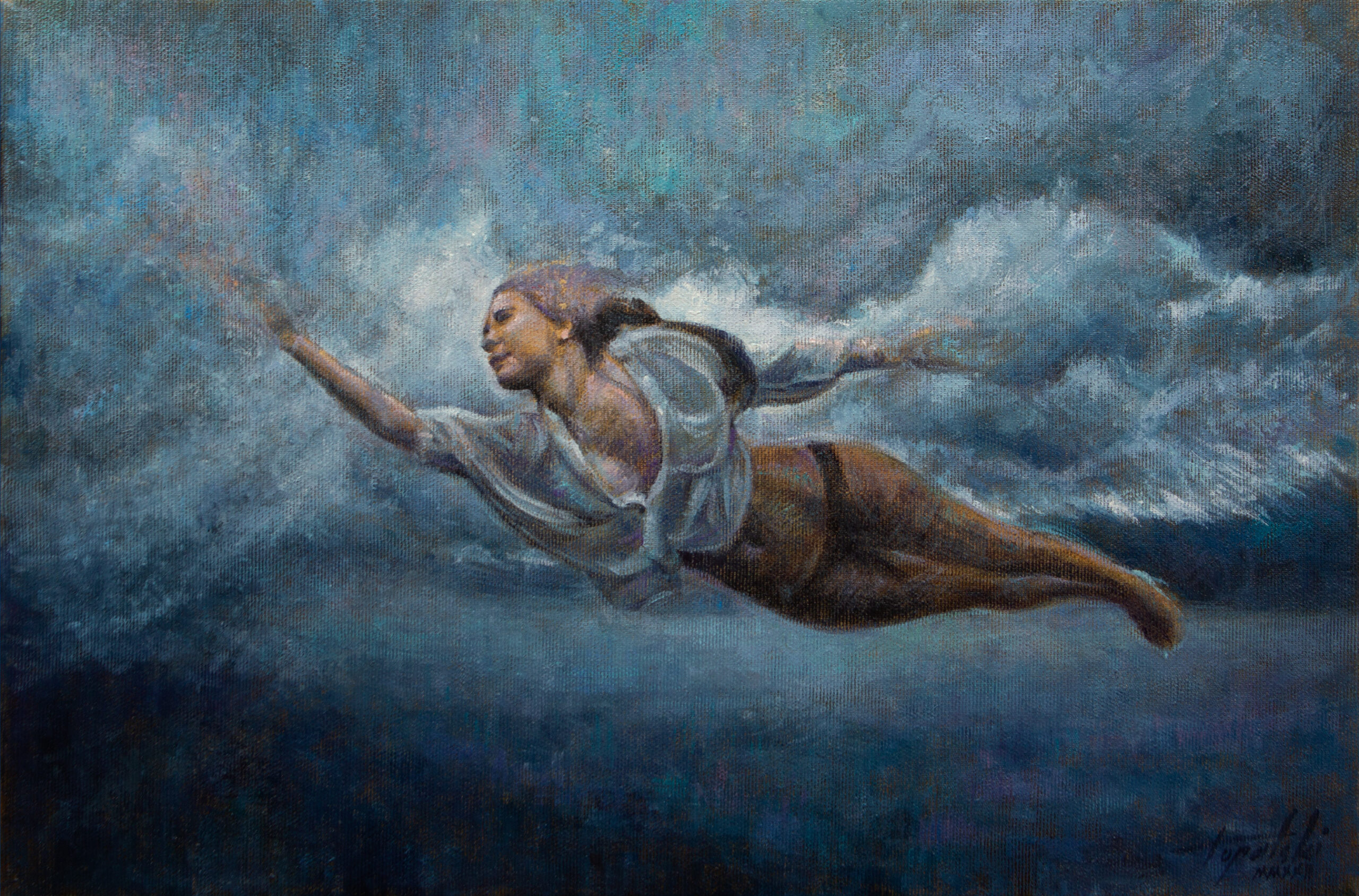Discovering the Depths of Emotion with Figurative Oil Painting Methods
Discovering the Depths of Emotion with Figurative Oil Painting Methods
Blog Article
The Role of Feeling and Expression in Metaphorical Oil Paint: An In-Depth Analysis of Subject and Make-up
The interplay of emotion and expression in figurative oil paint serves as a vital lens where one can analyze the complex relationship in between topic and composition. Artists harness different strategies, from color choice to brushstroke characteristics, to cultivate emotional resonance within their works. This nuanced orchestration not only shapes viewer assumption yet likewise invites a much deeper questions into exactly how these components integrate to mirror the intricacies of human experience. As we explore this abundant surface, one have to think about just how specific situation studies light up the more comprehensive ramifications of these imaginative choices.
Understanding Feeling in Art
Emotion in art functions as a powerful channel for expression, allowing musicians to share intricate sensations via their work. In figurative oil paint, this psychological deepness is commonly represented with the representation of the human figure, recording the nuances of human experience. The option of subject, shade palette, and brushwork all add to the psychological resonance of a piece.
Artists frequently attract upon personal experiences, social issues, or global motifs to stimulate feelings in the visitor. As an example, a portrait might show susceptability, while a vibrant number in activity can signify flexibility or turmoil. These psychological strings link the viewer to the artwork, promoting a discussion that goes beyond the visual medium.
Additionally, the interplay between light and darkness can intensify emotional strength, leading the viewer's gaze and attracting interest to particular components within the structure. Making use of texture in oil paint additionally adds layers of complexity, welcoming a responsive reaction that enhances the psychological experience. Generally, understanding feeling in art is crucial for appreciating the nuances that characterize figurative oil painting, as it changes mere depiction right into a profound exploration of the human condition.
Crucial Element of Composition
In the world of metaphorical oil paint, the structure offers as the underlying structure that arranges visual elements and enhances the emotional narrative. Crucial components of structure include equilibrium, comparison, centerpiece, and rhythm, each contributing to the overall impact of the art work.
Equilibrium describes the circulation of aesthetic weight within the painting, which can be achieved with unbalanced or balanced arrangements. A well-balanced composition gives security, enabling the viewer to engage with the item harmoniously - figurative oil painting. Comparison, on the other hand, involves comparing various aspects, such as dark and light or cozy and great colors, to guide the audience's eye and evoke emotional responses
The centerpiece is important, as it routes attention to one of the most substantial part of the painting, often highlighting the psychological core of the narrative. With techniques like shade saturation or placement, artists can highlight this area properly. Rhythm pertains to the repeating of elements, creating a feeling of activity and flow throughout the make-up. By skillfully integrating these crucial components, artists can craft psychologically resonant and compelling metaphorical oil paints that astound and involve their audience.
Topic and Its Influence
Subject plays a pivotal role in figurative oil painting, as it not just functions as the foundation for the narrative however also forms the visitor's analysis and psychological involvement with the art work. The choice of topic-- be it a solitary figure, a team dynamic, or a thematic depiction-- directly influences the psychological ambience shared to the target market.

For instance, pictures commonly stimulate individual links, disclosing the intricacies of human expression and character, while scenes depicting common tasks can create a feeling of belonging or fond memories. In addition, the historic and cultural context of the subject enhances the viewer's understanding, prompting much deeper reflections on social norms, values, and the human condition.
Various topics also generate varying levels of involvement; a significant dispute shown with figures in tension might evoke feelings of anxiety or empathy, while peaceful landscapes can conjure up harmony and reflection. visit Inevitably, the impact of topic in figurative oil painting is profound, as it acts as an avenue for psychological vibration, leading the customer's response and interpretation, and cultivating a link in between the artwork and the viewer. This interplay is necessary for the effective interaction of the musician's intent.
Methods for Evoking Feelings
The efficiency of metaphorical oil painting in conveying feelings is considerably influenced by the methods used by the musician. One of one of the most important approaches is using color concept, where the calculated option of shades can evoke specific psychological feedbacks. Warm colors, such as oranges and reds, often evoke sensations of enthusiasm or hostility, while cooler tones like blues and environment-friendlies have a tendency to evoke peace or sadness.
One more crucial strategy is the control of light and darkness, called chiaroscuro. This approach boosts the three-dimensionality of figures, creating remarkable contrasts that can increase psychological deepness. The positioning of light can guide viewers' feelings, highlighting particular components of the make-up.
Brushwork also plays an essential function; loose, meaningful strokes can communicate energy and spontaneity, whereas smoother methods might recommend tranquility or accuracy. Additionally, the arrangement of subjects within the composition can affect emotional impact. Close distance can suggest affection, while distance might suggest isolation.
Inevitably, the combination of these go to this website strategies allows artists to craft stories that reverberate with the customer, transforming a simple visual experience right into an evocative psychological journey. - figurative oil painting

Study of Notable Works
Checking out noteworthy jobs of metaphorical oil painting exposes just how numerous techniques are utilized to stimulate effective emotions. One exemplary case is Edvard Munch's "The Scream," where the altered figure and swirling background communicate existential fear. Munch's use shade-- deep blues and vibrant oranges-- increases the emotional effect, showcasing how palette choices can form viewer experience.
Another significant job is Pablo Picasso's "Les Demoiselles d'Avignon." Here, vibrant brushstrokes and fragmented types show a tumultuous emotional landscape, testing standard depictions of the female number. Picasso's ingenious structure not just records the visitor's interest yet additionally welcomes reflection on themes of identification and sexuality.
Additionally, Frida Kahlo's "Both Fridas" offers a poignant exploration of duality and self-identity. The contrasting figures, linked by a shared heart, exemplify Kahlo's psychological deepness and personal story. figurative oil painting. Her careful interest to detail and symbolic components offer to engage viewers on a visceral level
These study underscore the profound connection between emotion and structure in metaphorical oil painting, revealing just how musicians harness strategy to interact complex feelings and narratives that reverberate across time and culture.

Final Thought
In verdict, the interaction of emotion and expression in figurative oil painting significantly enhances the viewer's experience and analysis of the art work. With a careful choice of subject and compositional strategies, artists communicate extensive stories that reverberate on both global and personal levels. The application of shade brushwork, chiaroscuro, and theory more intensifies psychological deepness, transforming each canvas into an effective reflection of the complexities of the human experience.
In figurative oil painting, this emotional deepness is frequently represented via the representation of the human figure, capturing the nuances of find out human experience.Additionally, the interplay in between light and shadow can enhance emotional strength, assisting the visitor's gaze and attracting interest to certain aspects within the make-up. The usage of appearance in oil painting further includes layers of intricacy, welcoming a tactile feedback that boosts the psychological experience.The focal point is crucial, as it guides interest to the most substantial part of the painting, typically highlighting the psychological core of the story. Eventually, the influence of subject matter in figurative oil painting is profound, as it serves as a channel for psychological vibration, leading the customer's response and analysis, and cultivating a link in between the observer and the art work.
Report this page